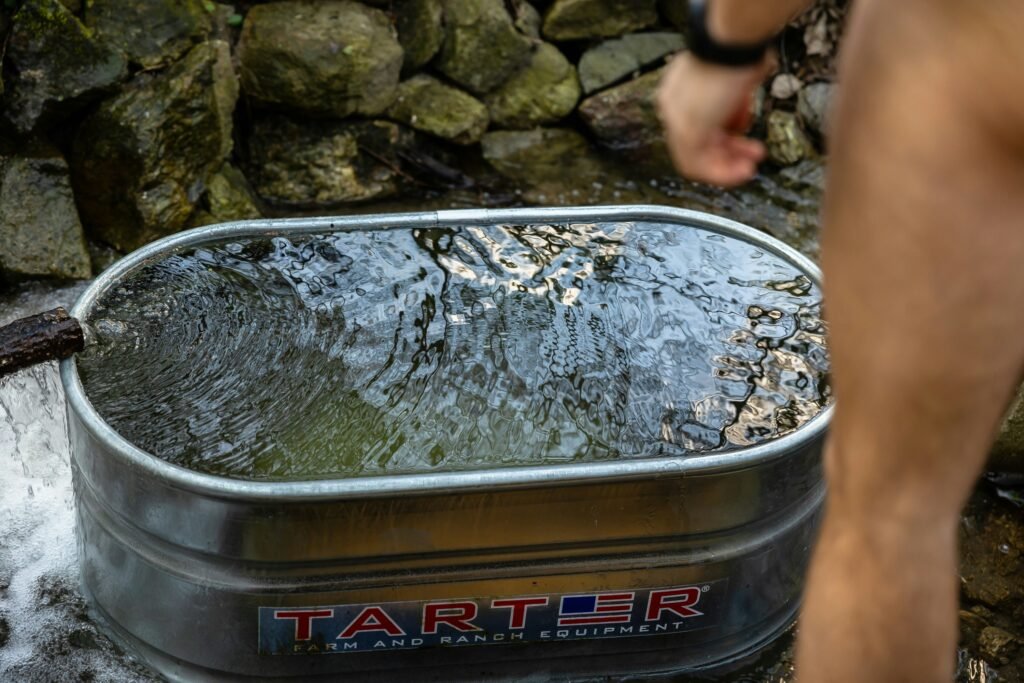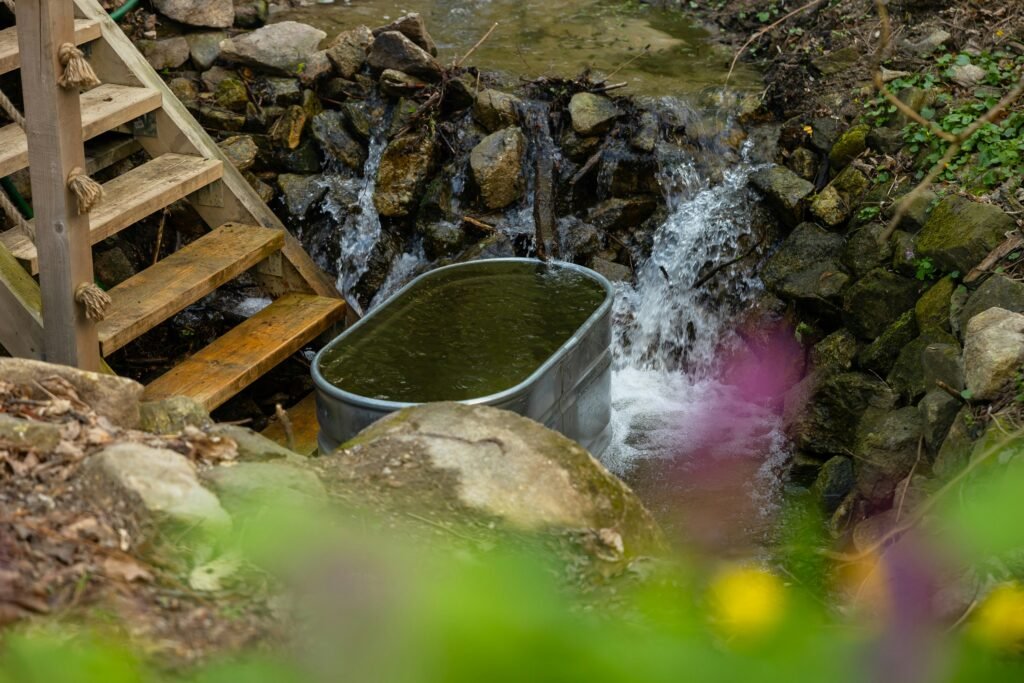What comes to your mind when you think about taking a cold plunge? Is it the invigorating sensation or the shock to your system? Maybe it’s a mix of excitement and a touch of hesitation. Whether you’re preparing for a quick dip in an icy lake or embracing a chilly vat in your local wellness center, figuring out what to wear can be just as important as the plunge itself. Let’s break it down together.

Understanding Cold Plunges
Before we get into the nitty-gritty of attire, understanding what a cold plunge is will set the stage. A cold plunge typically refers to a short immersion in frigid water, which can range from temperatures around 50°F to as low as 32°F (freezing!). This practice is often celebrated for its myriad of health benefits, including improved circulation, enhanced recovery from workouts, and even a boost in mental resilience.
Doing a cold plunge can feel like a rite of passage for many, but the attire you choose can make a substantial difference in how enjoyable or bearable the experience is.
Why Choosing the Right Attire Matters
Now, let’s consider why attire matters. Wearing the wrong clothing can lead to discomfort, chill your body even more, and make your plunge experience less enjoyable. The right outfit can help you ease into the icy embrace of the water while keeping you safe. After all, we want you to come out feeling refreshed and invigorated, not frozen and unimpressed.
The Essential Do’s of Cold Plunge Attire
Do Wear Swimwear
First things first: wearing appropriate swimwear is not just a suggestion; it’s essential. Opt for a swimsuit that is made of materials that dry quickly, like nylon or spandex. Avoid heavy fabrics like cotton, which retain moisture and will leave you cold long after you leave the water.
You might want to consider a two-piece if you’re looking to maximize mobility, or a one-piece if you prefer a bit more coverage. Whatever your style, make sure it fits snugly to minimize water getting in and reduce the chances of feeling the full brunt of the cold.
Do Consider a Rash Guard
If you’re particularly sensitive to cold, wearing a rash guard can be a game-changer. These lightweight, stretchy tops are designed to retain heat while also offering UV protection. Plus, they add a layer of insulation against the chill. When you wear a rash guard, you’re essentially balancing functionality with a bit of style.
Do Bring a Toweling Robe or Cover-Up
After your plunge, slipping into a soft, warm toweling robe or cover-up is a delightful way to ease the transition back to the warmer air. Opt for something that’s lightweight and easy to throw on. A robe or cover-up can help retain some warmth immediately after you get out, minimizing the shock to your system.
Do Invest in Quality Footwear
You might not think about footwear, but when it’s cold, your extremities are the first to feel the chill. Investing in slip-resistant water shoes or wet suit booties can improve your grip on slippery surfaces, allowing you to step in and out of the plunge with confidence. Just make sure they’re comfortable and have enough insulation to protect your feet from the cold surfaces.
The Critical Don’ts of Cold Plunge Attire
Don’t Wear Cotton
Let’s reiterate this: cotton is a no-go. It absorbs water and retains moisture, leaving you feeling cold and clammy. You’d want to avoid any clothing made of cotton, from your swimsuit to towels. Instead, opt for quick-drying fabrics that wick moisture away from your skin. This is especially crucial during a cold plunge.
Don’t Overdress
When preparing for a cold plunge, it may seem tempting to load up on layers for warmth, but too much clothing can actually hinder your experience. Excessive layers can weigh you down in the water and become uncomfortable. Instead, keep it simple with a swimsuit and perhaps a lightweight cover-up to wear before and after.
Don’t Forget the Essentials
While you’re focusing on swimwear, don’t overlook the tiny yet vital details. Sunglasses can be great for protecting your eyes on sunny days while you plunge. A water-friendly hat is also a good idea to shield your face from the elements when taking a dip outdoors. Though they might not seem critical, these little accessories can enhance your experience.
Don’t Rush Your Preparation
If you’re nervous about jumping into the cold water, it can be tempting to throw on your swimwear and run straight to the plunge. However, taking your time to prepare can make a world of difference in your mental readiness. Use this prep time to breathe deeply and set your intentions for the plunge. You’ll find that an intentional approach can enhance your experience significantly.
Prepping for Your Cold Plunge
Before you jump in, let’s ensure you’re thoroughly prepared. It starts with choosing the right timing. Opt for early mornings or later in the evening when the air is crisp, but the surroundings are safe and quiet.
Mental Preparation
Getting into the right mental state is just as vital as your attire. Use visualization techniques to imagine the refreshing feelings you’ll experience after the initial shock of the cold. Take deep breaths before stepping into the icy water, allowing your body to relax while you focus on the exhilarating experience ahead.
Warm-Up Exercises
While you don’t want to overheat before a cold plunge, doing some gentle warm-up exercises can be helpful. Simple stretches or light cardio, like jumping jacks, can get the blood flowing and might make the plunge feel slightly less daunting. Plus, your body will have a better chance of adjusting to the cold when warmed up slightly.

What to Do After the Cold Plunge
Once you’ve completed your plunge—and you’re hoping to come out feeling reborn—let’s discuss what to do next.
Dry Off Properly
Before you step out into the world again, make sure to dry off properly. Choose a towel that’s made of quick-drying fabric, and wrap yourself snugly to retain warmth. If you have a hairdryer or a portable heating device, use it on the low setting to warm your extremities once you’re out.
Rehydrate and Nourish
Cold plunges can be taxing on your body, so it’s essential to replenish lost fluids. Drink some water, herbal tea, or even a nourishing smoothie to help restore balance. If you feel particularly cold after your plunge, consider warm drinks, but steer clear of caffeine, as it can dehydrate you.
Dress Comfortably
Once you’re dry, put on clothes that are not only warm but also comfortable. Fleece-lined leggings, cozy sweaters, or even an oversized hoodie can keep the chill at bay after your dip. Choosing soft fabrics will help maintain comfort while you bask in the afterglow of your cold plunge.
Reflect on Your Experience
Take a moment to reflect on how you felt during the plunge and after. Whether you felt invigorated or just plain uncomfortable, taking notes about your experience can help prepare you for future plunges. Think about aspects like what you wore, how long you stayed in, and how you recovered. This will ultimately contribute to a much richer experience next time.
Other Considerations for Cold Plunging
Frequency of Cold Plunges
How often should you be hitting the cold plunge? It can vary from person to person. For those who are new or trying it out, once a week is often enough to reap the benefits without overwhelming your body.
On the other hand, seasoned cold plungers may indulge more frequently—some even daily! The key is to listen to your body and ensure you don’t overdo it, as it can lead to exhaustion or even raiding your immune system if done excessively.
Safety Precautions
Being mindful of safety is paramount. Always have someone with you when you take the plunge, especially if you’re new to the experience. Cold water can shock the system, and having a buddy along can ensure you have help in case you feel light-headed or uncomfortable.
Also, be aware of the environmental conditions. If you’re planning to take a plunge outdoors, always check the temperature, water currents, and even ice levels. Safety first means that your plunge can translate to an invigorating experience rather than a dangerous one.
Recovery Time
After a cold plunge, give your body time to recuperate. Don’t rush into strenuous activity or workout routines right away. Instead, allow your body to warm up gradually. If you feel any discomfort, listen to your body and take a moment before proceeding with any post-plunge exercises.

Adding Cold Plunge to Your Routine
Incorporating regular cold plunges into your routine can take some time to get used to, but the rewards are worth it. It might start slowly with just one plunge per week, eventually leading you to discover a new habit that helps boost both your physical and mental resilience.
Document Your Journey
Consider keeping a journal to document your experiences with cold plunging. You can track your feelings before and after each plunge, as well as any changes in your physical or mental well-being over time. This can help you build a connection with your body’s response to the cold and create a positive reinforcement system.
Connect with a Community
If you’re really getting into cold plunges and looking for an enriching community to share your experiences with, consider seeking out local groups or social media communities centered around cold therapy. Sharing stories and tips with others can be a great motivator and can help you remain committed to your new venture.
Conclusion
Taking the plunge into cold water is an exhilarating experience that can unlock new potential within you, both in body and spirit. By being mindful of what you wear and how you prepare, you can ensure that each plunge feels like a refreshing ribbon of revival rather than a shock to the system.
From swimwear to recovery time, understanding what works for you is a journey of exploration. With just a bit of preparation and the right attitude, you can embrace chilly waters with open arms, transforming the experience into something truly liberating. So, are you ready to take your first plunge?


